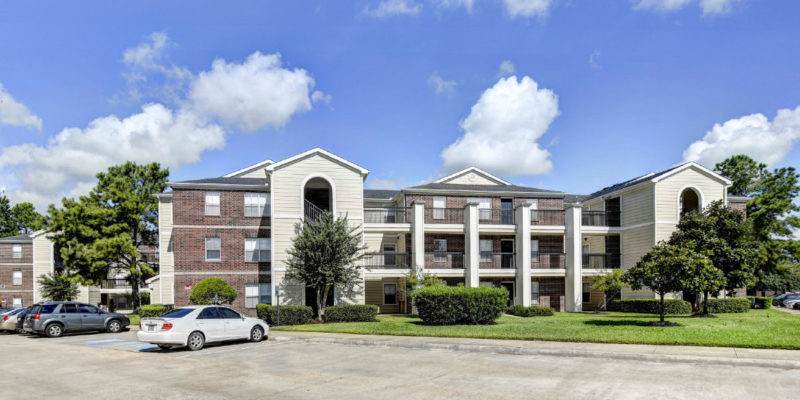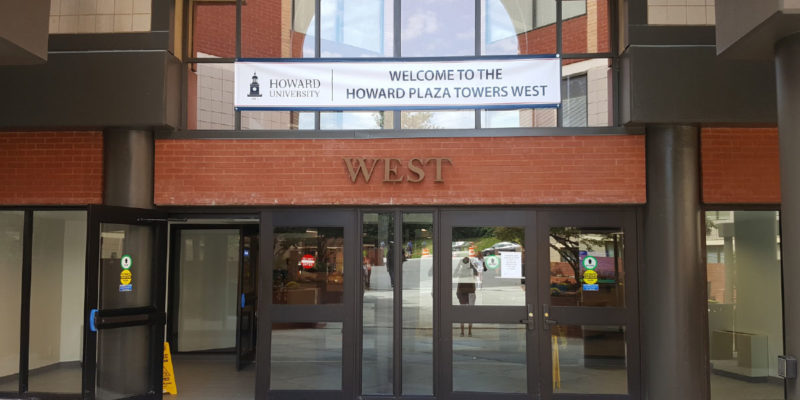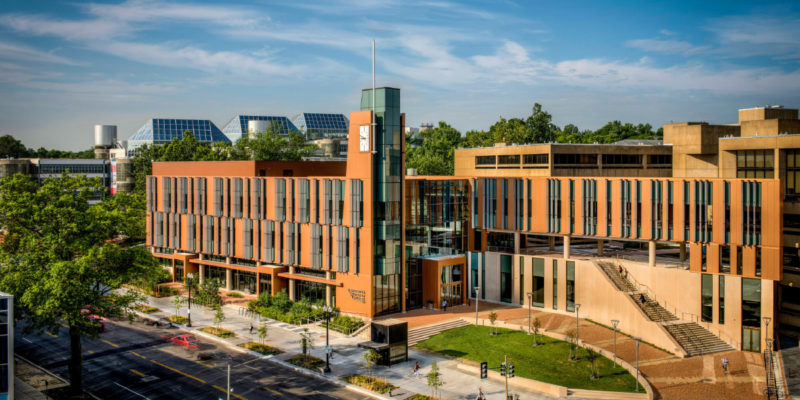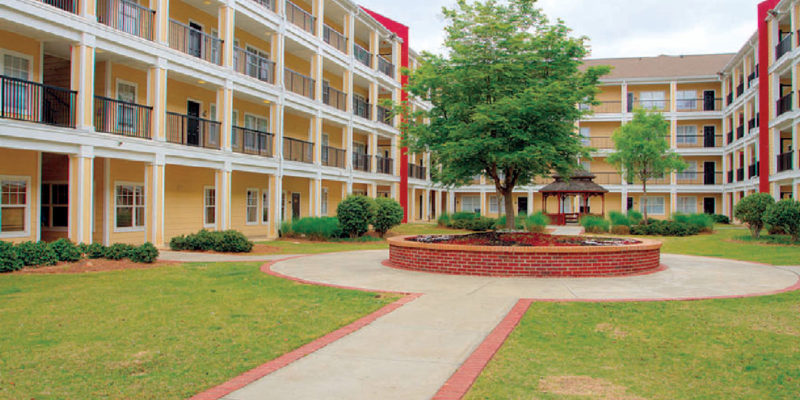The finances of HBCUs (historically black colleges and universities) have been making headlines—both negative and positive—for several years.
A number of articles have highlighted these institutions’ financial instability: “Future of Cash-Strapped Historic Black Colleges” (NPR, 2012); “The Struggles of Historically Black Colleges and Universities” (Slate.com, 2014); “Hard Times at Howard U.” (The New York Times, 2014); and “State Throws Cheyney University $30 Million Lifeline” (The Philadelphia Inquirer, 2017).
At the same time, some HBCUs are reporting significant surges in enrollment. For example, based on 2015 data, the Pew Research Center concludes that the 10 largest HBCUs in the United States served more than 93,000 students, and that number has grown in the past two years.
Unfortunately, unlike many higher education institutions, HBCUs with growing enrollment don’t often see the increase translating into more tuition revenue, since most students receive a substantial amount of financial aid. Yet, higher enrollment is still considered a positive trend and is driving the need for additional housing and facilities—which, in turn, is motivating HBCU leaders to consider new funding models, including public-private partnerships (P3s). Among the institutions highlighted in this article, one has some significant experience in this financing model, while several others are still on the learning curve.
Mixed Reviews
According to the National Center for Educational Statistics (NCES), enrollment at HBCUs rose by 32 percent between 1976 and 2015, with some HBCUs experiencing record levels of freshmen enrollment. As of August 2017, Prairie View A&M University, Prairie View, Texas, was trending 8 percent ahead of last year’s certified enrollment of 8,762, driven in large part by a nearly 15 percent enrollment increase in first-time, full-time freshmen. “We now enroll 9,200 students,” says Corey S. Bradford, senior vice president for business affairs at PVAMU. “We’ve been able to grow because we’ve expanded our housing.”
Lucille Maugé, executive vice president and chief financial officer at Clark Atlanta University, Atlanta, also acknowledges the direct relationship between growth and new facilities. “We enrolled 3,992 students this semester,” she says. “To continue to grow undergraduate enrollment, we need another dining hall and additional housing.”
And that’s also the not-so-good news: With growth come financial challenges. Enrolling more students means financing more capital projects, and HBCUs are having difficulty obtaining the necessary funds.
“On the public side, the primary source of funding is the state, or in our case, the District of Columbia,” says Troy A. LeMaile-Stovall, chief operating officer at the University of the District of Columbia (UDC). “It’s a tough financial model to be dependent on a singular funding source. We’re competing against other capital funding priorities, and the District has debt limitations.”
The institutions have limitations of their own. “As we celebrate the university’s 150th anniversary this year, Howard is emerging from a period of financial difficulty,” says Michael Masch, chief financial officer and treasurer at Howard University since 2015. “In 2014, when we had large deficits, the credit rating agencies downgraded Howard, so we don’t have the ability to enter capital markets and borrow money. And we don’t currently have enough margin to take on additional debt based on our own balance sheet.”
Further, the relationship between HBCUs and the current White House administration has also had its ups and downs. In May, President Donald Trump challenged the constitutionality of a long-standing federal program (Historically Black College and University Capital Financing Program) that helps HBCUs finance construction projects on their campuses. But earlier in the year, HBCUs were encouraged when President Trump signed an executive order directing the White House Initiative on HBCUs to operate from the White House instead of the Department of Education. However, they were disheartened by delays in the appointment of an executive director for the initiative.
Johnathan Holifield was appointed executive director of the initiative in September, the same month the administration hosted the Annual National White House HBCU Week Conference, despite requests from congressional leaders, the United Negro College Fund, and HBCU presidents to postpone the event. President Trump did not attend the conference, and according to most reports, leaders at HBCUs and the organizations that support them, such as the UNCF and the Thurgood Marshall College Fund, still have concerns about where these institutions stand with the current administration.
All of this ultimately impacts the bottom line and overall financial health of HBCUs. And just like many other institutions, HBCUs have been faced with finding the funds for capital improvements at a time when state and/or federal funding has been reduced and the communities that they serve have criticized or even protested any increases to tuition. So, what can these institutions do?
Many historically black colleges and universities are becoming more open to alternative financial models and funding mechanisms, such as public-private partnerships, which may not have been previously available to them because of discriminatory practices, as was acknowledged in a July 2016 letter from U.S. Sens. Patty Murray (D-WA) and Bob Casey Jr. (D-PA), and U.S. Reps. Robert C. Scott (D-VA) and G.K. Butterfield (D-NC), calling on the Government Accountability Office to investigate financial barriers facing HBCUs (see sidebar, “GAO to Assess Capital Needs of HBCUs”).
The legislators wrote: “Because HBCUs were created to educate a historically underserved community, they have faced challenges achieving financial stability. This is due, in part, to the legacy of discrimination, which has, at times, affected their ability to access capital for construction or renovation.”
Because of this and other factors, HBCUs are new to the P3 marketplace, and some may have more difficulty than others in positioning themselves to take advantage of these much-needed financial opportunities.
The Capital Conundrum
Like other smaller institutions that serve culturally distinct populations in terms of race, ethnicity, socioeconomic status, and/or geographic location, HBCUs face challenges in obtaining the capital funding needed to upgrade their facilities and internal systems, such as information technology and HVAC systems. In some instances, these challenges are unique to HBCUs because their financial circumstances are often tied directly to their mission of serving underserved and underrepresented populations.
The Higher Education Act of 1965, as amended, defines an HBCU as “any historically black college or university that was established prior to 1964, whose principal mission was, and is, the education of black Americans.” Certainly, HBCUs have opened their doors to students from a variety of backgrounds, but their chief mission has been the higher education of African Americans. While they make up only four percent of the nation’s higher education institutions, HBCUs award 22 percent of the bachelor’s degrees earned by African Americans.
Here’s an overview of the funding sources that institutions typically rely upon, and the opportunities and obstacles they present for HBCUs.
Tuition revenue. Traditionally, tuition revenue has not been a significant source of income for HBCUs. According to the NCES, total revenue for HBCUs in 2014–15 was $7.7 billion, with $1.8 billion generated from student tuition and fees. “Our net tuition growth is very limited,” says Howard’s Masch. “To make education affordable, we have to offer students a substantial amount of financial aid.”
According to the Institute for Higher Education Policy, two-thirds of students at HBCUs receive Pell grants. “We serve a low-income population, so they’re not cash-paying students,” explains PVAMU’s Bradford. “They rely on financial aid, and we have to find a way to support those students.”
Clark’s Maugé concurs: “Students at HBCUs need and expect assistance with financing their college educations.” In fact, the Education Trust’s March 2017 study, A Look at Black Student Success, noted that approximately half of the nation’s 105 HBCUs have a freshman class in which three-quarters of the students come from low-income backgrounds. As such, many HBCUs do not view tuition revenue as a potential area for growth.
Alumni and donor giving. Most HBCUs have some level of alumni giving and donor relations, but there’s room for improvement.
“At under- or low-resourced institutions, you don’t have wealthy alumni or alumni with a pattern of giving,” UDC’s LeMaile-Stovall says. “Access to wealth creation is limited, and we haven’t developed relationships in order to request large gifts.”
“From a historical perspective, our wealth is not as significant in the African American community,” Bradford offers. “We don’t have high-net-worth donors in our networks. The Warren Buffets of the world aren’t giving money to HBCUs. If they changed their behaviors, we would have bigger endowments.”
Maugé also sees alumni giving as an opportunity for generating alternative revenue. “I’ve seen an uptick in alumni giving at Clark,” she says. “Alumni giving is low at most HBCUs, but there is an opportunity for us to engage alumni through special campaigns. We have a lot of room for growth. As we engage with them more, the more they will give.”
Federal funding. The most significant source of federal funding for HBCUs’ capital projects has been the Historically Black College and University Capital Financing Program. According to the Department of Education, since FY96, the program has originated loans to 45 HBCUs (nine public and 36 private). These loans have been used to refinance capital project loans, renovate existing facilities, build new ones, or fund any combination of the three. Currently, 40 colleges and universities are participating in the program, with loan amounts ranging from $7.5 million to $165 million.
Clark Atlanta University is among them. CAU received two loans, the first in 2007 for renovation and modernization of campus facilities, and the second in 2013 to refinance existing debt. Combined, the loans total approximately $34 million. “The HBCU loan program has been an essential source of borrowing for our capital improvement,” Maugé says. “We were able to refinance old debt and renovate housing. It has been effective for us because the interest rate is low. For example, we refinanced a bond that was [at] 6 percent to less than 1 percent, which allowed the university to fund a substantial capital reserve.”
At the same time, she acknowledges that, “one disadvantage of the HBCU loan program is that it requires a cash reserve, funded by the escrow fee charged to all program participants, to pay principal and interest on the bonds in the event of any program borrower’s default in loan repayment.”

Through its partnership with American Campus Communities, Prairie View A&M University develops fully furnished apartments, featuring private bedroom/bathroom floor plans; a 24-hour fitness center; and an academic success center, available to students living at University College.
Capital markets/bonds. Without partners, HBCUs’ access to capital markets has been limited.
“Most of us don’t have the financial health to get a good bond rating, so you’re already behind the curve,” Bradford says. “You’re a poor campus trying to borrow money at a high interest rate. Working with a private partner, you get a better interest rate, and you don’t have to use your own debt capacity to borrow.” (See sidebar, “Planning For Your P3.”)
“When you don’t have a strong balance sheet, it’s difficult to go to market,” adds LeMaile-Stovall. “At the end of the day, you have to pay back those bonds. Most HBCUs don’t have the wherewithal, as in reserves, to bounce back if those revenue targets aren’t met.”
“The credit ratings for private HBCUs are not where they need to be,” Maugé says, “and without those ratings, you cannot go into the bond market.”
Given this financial landscape, could public-private partnerships (P3s) be one viable option for addressing the capital funding challenges at HBCUs? It depends on the institution.
PVAMU, Howard, UDC, and CAU are all at different points on the pathway to pursuing P3s. Their CBOs, and an industry expert, offer perspectives on how this financial model fits into the overall fiscal strategy for their institutions.
Gaining Ground
PVAMU was one of the earliest adopters of P3s among HBCUs. “We’re celebrating 20 years of partnership. We were one of their first customers,” says Corey Bradford of PVAMU’s long-standing relationship with American Campus Communities (ACC). “They have been excellent partners.”
In 1996, the university entered into an agreement with ACC out of necessity. “Our housing stock was very poor; they completely replaced our residential housing,” Bradford says. Their first project together was the opening of the first phase of the University Village apartment community, which today can house a little more than 1,920 students. Through the years, the relationship has grown to include the privatization of all PVAMU’s student housing through a management agreement with ACC.
The arrangement offers several advantages:
- Focus on core mission. “They understand that they need to build a quality product. That’s their core business; it’s not ours,” Bradford explains. “This alleviates a burden on the university. The company takes care of all the maintenance and purchasing, so there’s less stress on staff in my department. Staff can then focus on activities core to our mission.”
- Generate revenue. In addition to alleviating administrative burden, PVAMU’s ongoing partnership with ACC generates revenue. “Occupancy is always at 100 percent,” Bradford says, “and housing proceeds can be invested in other capital projects.” In addition, once PVAMU’s debt on the property expires, the university will own it, and it becomes a PVAMU asset.
- Leverage relationships. Even better from Bradford’s perspective has been the ability to expand relationships with partners to fund other projects. “We’ve used the success of our P3 as leverage to bring other projects to fruition,” he says. “For example, our P3 partners made significant contributions to help build the university’s new stadium.”
What’s next? According to Bradford, at least two more P3s are on the horizon; the next one will be a 50-acre mixed-use development. He acknowledges that PVAMU has had a leg up in the P3 process that many HBCUs don’t because of its affiliation with the Texas A&M University System. “They [the system] do these deals all the time, so they know the pitfalls and shortcomings. We have been able to rely on their expertise and advice throughout the process.”
In this regard, as an institution, PVAMU has secured such expertise, one of the three key elements of any P3 or development deal, according to Herman Bulls, vice chairman, Americas, JLL. Bulls, who has worked with more than 100 campuses on P3s during the last 20 years, asserts that successful partnerships require skills (expertise), money (capital), and market demand (programs).
Of the first component, he says, “Development expertise is essential. HBCUs have less experience working with these types of financial models, and typically, they don’t have staff with the skill sets to approach these projects in a manner that’s in their best interest.”
Bradford agrees: “You must structure a good deal, with risk sharing among the partners, but make it a win-win deal for your institution. There’s no cookie-cutter structure, and you need good attorneys and real estate professionals who can help structure the deal. You don’t need amateurs.”

Leveraging Land
Howard’s Masch readily acknowledges that the university has extremely low revenue growth. “We’re fortunate to have a federal appropriation, but it’s not a source of revenue growth” he says. “Our goal for the next five to 10 years is to expand revenue sources. P3s are part of a multifaceted plan. Since we are unable to enter capital markets, we are working to diversify our revenue streams by finding partners whose balance sheets allow them to enter markets on our behalf.”
One of Howard’s first partners was Corvias. In September, a public-private partnership between Corvias, Howard University, and Howard Dormitory Holdings 1 LLC completed the $35.5 million renovation of Howard Plaza Towers, a 327-unit residence hall, housing more than 820 students. “Two-thirds of housing at the university is either new or as new,” Masch says. “These kinds of partnerships make sense because there is a clearly identifiable revenue stream that pays for the housing. It’s a fairly easy revenue source to measure. Student housing has been the most typical P3.”
Howard has moved beyond the typical in its approach to pursuing P3s. In June, the university concluded a seven-year agreement with IBM for building an entirely new IT infrastructure and telecom system. “Rather than trying to fix it, we decided to start from scratch and build new,” Masch explains. “Random, unscheduled outages have been a reality for the past several years, and we needed a fully reliable, modern network.” Key considerations for Masch when evaluating the partnership were (1) whether it would be possible for a private company to self-finance the rebuilding of an IT infrastructure and (2) whether the university could negotiate an annual fee that would be no greater than what was already being spent on the current network.
Moving forward, Masch plans to focus on the monetization of underutilized assets, such as some of the university’s real estate. “Past leaders at Howard acquired real estate on the campus’ periphery that isn’t suitable for modern housing, and we don’t need the land to meet academic and research needs.”
To this end, Howard recently entered into a partnership with Urban Investment Partners, and Neighborhood Development Co., to turn two former residence halls into apartments. The developers signed a 99-year lease with the university for the unused dorms, which were originally constructed in the 1940s.
As reported by former reporter Karen Goff in the Washington Business Journal, “the $50 million renovation projects will deliver 162 market-rate units, and the developers have agreed to offer scholarships and internships to Howard students.”
Masch credits Howard University President Wayne A.I. Frederick for providing his support and leadership as Howard expanded its use of public-private partnerships. “Dr. Frederick recruited me to come to Howard,” he says. “Part of his vision for the university is sustainable financial stability, and he put together the team to execute it.”
JLL’s Bulls echoes Masch’s sentiment. “Leadership buy-in from the board and president of the institution is critical,” he says. “They can provide the resources HBCUs need to obtain the appropriate expertise to help them on their P3 journey. They are buying access to capital and expertise.”

Preparing to Partner
UDC’s LeMaile-Stovall feels that he has the support of the university’s leadership, as the institution prepares to pursue several public-private partnerships. “Our board is supportive of us pursuing P3s,” he says.
In addition, two years ago, Washington, D.C., Mayor Muriel Bowser officially launched the District’s Office of Public-Private Partnerships. “We’ve been in good discussion with the mayor’s office for public private-partnerships,” LeMaile-Stovall says. “The mayor gets it, and the office is helping facilitate our work with P3s.”
He acknowledges that the work is in its “very early stages” and has plans to go down a number of paths that focus on UDC’s most critical capital needs. “In terms of housing, we’re in talks to work with a developer for our first residence hall,” he explains. “We’re also in conversations for P3s to redo our IT and HVAC infrastructures, with estimated costs of $4 million, and $70 million to $80 million, respectively.”
Fortunately, according to him, UDC will enter the P3 arena in good financial standing. “We don’t have a cash flow problem. We’re able to pay our bills. We don’t carry debt,” he says. “[However] the District would have to approve this transaction and its impact to the District’s balance sheet.”
The institution’s capital position is another key component of a successful P3, according to Bulls. “You have to have capital along with expertise and market demand,” he says, “and HBCUs don’t normally have all three.”
LeMaile-Stovall, who participated in several P3s at previous institutions, underscores the importance of HBCUs having staff that intimately understand P3s. “If you don’t have someone on your side of the table with expertise, you could end up with a bad deal,” he says.
In terms of UDC’s priorities, the IT infrastructure will be the first partnership, and LeMaile-Stovall projects late spring 2018 as the timing for completing the university’s first P3, which both the UDC board and D.C. City Council must approve. “As we begin negotiations, we have to think about how we can invest in the District and help with its debt ratio,” he says, “and I’m excited about having those conversations.”
Assessing Alternatives
CAU’s Maugé believes that it’s time to start having P3 conversations as well. “We are looking at all funding options, because we are growing,” she says. “I am investigating P3s and working to improve our credit rating.”

Unfortunately, the university’s initial foray into partnerships to renovate housing through ground leases issued by a separate independent subsidiary negatively impacted its credit rating.
Clark Atlanta University Suites and Heritage Commons, both managed by American Campus Communities since 2011, were built to offer students modernized housing conveniently located between CAU’s Panther Stadium and the main campus.
“We do have some residence halls that are off our books. The bonds were issued through the Atlanta Development Authority,” Maugé says. “A separate independent subsidiary of the Atlanta Development Authority, ADA/CAU Partners Inc., has problems making some of the principal and interest payments because these payments are dependent upon revenue from the residence halls. They are not our properties, but our students live in them. They have struggled in making their debt service payments.
“Moody’s puts those transactions back on your books when evaluating your rating,” she explains, “which would be OK, if the properties weren’t in default; but instead it goes against our credit rating.”
Understandably, Maugé approaches P3s with caution. “They are not for every institution, because they can be expensive transactions, and they can still impact your credit rating,” she says. “If these deals go bad, there’s still your reputation and your students to consider.
“I am very fortunate to work with a very strong trustee finance committee,” Maugé continues. “We speak the same language, and we are open to alternative financing options if they are the right ones for the university.”
APRYL MOTLEY, Columbia, Md., covers higher education business issues for Business Officer.



